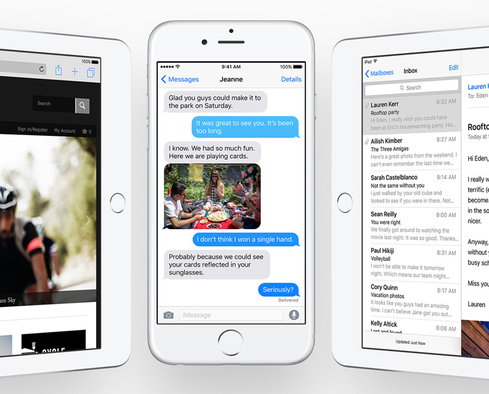Mobile Ad Blockers: Who Will Pay The Price?
A report from the New York Times removes doubt that ad blockers make a difference in the mobile experience, but at what cost?


iOS 9: 10 More Hidden Features To Explore
iOS 9: 10 More Hidden Features To Explore (Click image for larger view and slideshow.)
The ad blocking debate is raging on.
Stoking the flames of the controversy is a recent New York Times report that found that, "For a number of websites that contained mobile ads with a lot of data, Web page data sizes decreased significantly and load times accelerated enormously with ad blockers turned on. The iPhone's battery life also improved -- but more modestly -- with ads removed."
The Times used Purify, Crystal, and 1Blocker as the test apps while viewing ads on 50 of the most popular news sites from an iPhone.
Incidentally, ad blocking is a misnomer. It is really "content blocking" that is under discussion since the mechanism used in the apps can block content of any kind, not just ads.
For example, Fortune recently found that the Crystal app for iPhones caused websites for retailers such as Sears, Walmart, and Lululemon to load with some content missing or prevented customers from adding items to their shopping carts.
Long available for desktop Web browsers, the content blocking support present in Apple's recently released iOS 9 has targeted the fastest growing segment of Web browsing -- mobile.
While there has been much discussion lately on how this technology will impact the business models currently in use on the Web, hard data about its effects has been lacking.
But the Times report has helped change that.
One of the sites the paper tested for its report was Boston.com. The testers found that with ads, the home page on average measured 19.4 megabytes. When ads were removed using Crystal or Purify, it measured 4 megabytes. On a 4G network, this meant that the page took 39 seconds to load with ads and eight seconds to load without ads.
Another site -- the home page of the Los Angeles Times -- measured 5.7 megabytes with ads. After filtering the ads, it dropped to 1.6 megabytes with Crystal and 1.9 megabytes with Purify and 1Blocker. On the same 4G network, that page took 11 seconds to load with ads and four seconds to load without the ads.
[Read more about ad blocking.]
However, not all sites showed the same degree of improvements.
The Times found that BuzzFeed.com came in at 3.8 megabytes and took eight seconds to load with no content blocker. Enabling Crystal caused it to measure 2.9 megabytes and six seconds for loading.
MSN.com measured 2 megabytes with ads, taking four seconds to load. When ads were removed with Purify, it measured 1.8 megabytes, and the loading time remained the same.
So, content-blocking effects were a product of how stuffed the sites were with ads and how heavy the individual ads were. While there was a 21% increase in battery life while using the apps, it only applies to time spent on Web browsing.
These results may show the way out of the blocking conundrum for publishers. They must find a way to enable only light-weight ads, ones that will not impair load times or inflate the data size of their pages.
By making the need for the content-blocking apps less urgent -- or getting sites exempted by a blocker's whitelisting -- through featuring user-friendly advertising, publishers may yet save their business models and prosper.
About the Author(s)
You May Also Like
How to Amplify DevOps with DevSecOps
May 22, 2024Generative AI: Use Cases and Risks in 2024
May 29, 2024Smart Service Management
June 4, 2024







